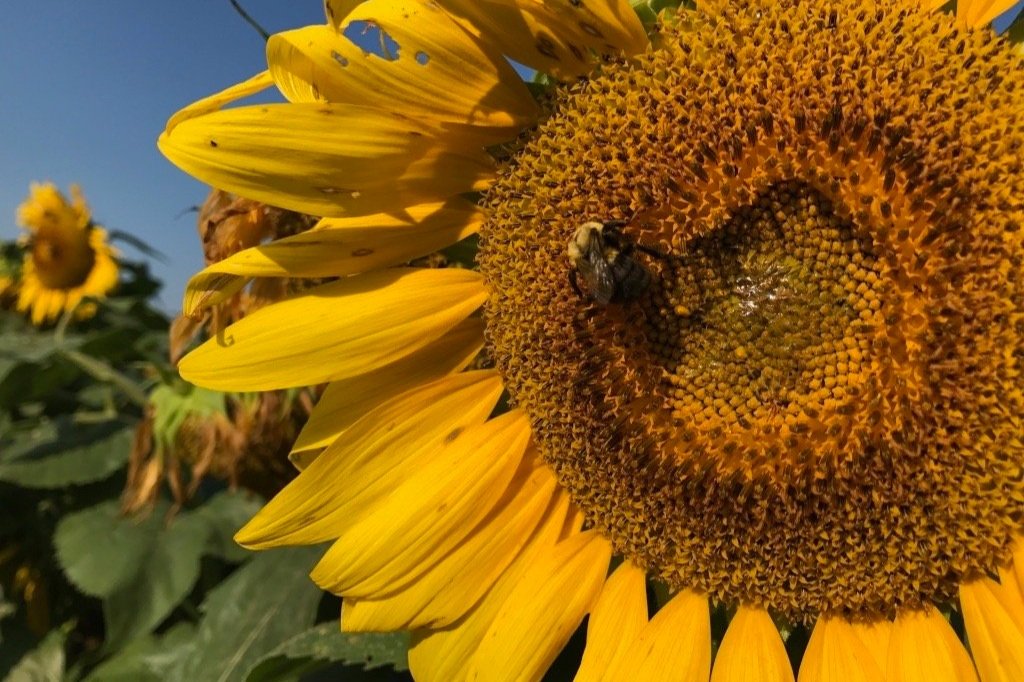Washington State steps up to protect Bumble Bees
Excepts from an article by Molly Martin of Xerces Society
Washington state has just become the first state to develop a statewide strategy to conserve bumble bees. Research has shown significant declines in native pollinators globally, especially bumble bees. In response to these declines, partners convened in Washington state to directly confront the issue, creating a strategy led by the Xerces Society in partnership with the US Forest Service, Bureau of Land Management, US Fish and Wildlife Service, and Washington Department of Fish and Wildlife.
Washington state’s conservation strategy focuses on eight state and federally-recognized bumble bee species: frigid bumble bee (Bombus frigidus), golden-belted bumble bee (B. kirbiellus), Morrison bumble bee (B. morrisoni), western bumble bee (B. occidentalis), Suckley cuckoo bumble bee (B. suckleyi), half-black bumble bee (B. vagans), yellow bumble bee (B. fervidus), and American bumble bee (B. pensylvanicus). Additionally, other bumble bee species and pollinators will benefit from recommendations included in this strategy.
When Bumble bees are threatened, our ecosystem health is threatened
Bumble bees are critical pollinators to ecosystems, landscapes, and other agricultural and natural areas. There are about 250 Bumble bee species globally, with 50 in North America, and nearly 30 in the Pacific Northwest. Bumble bees provide essential ecosystem benefits by pollinating wild and cultivated plants and the very food we grow. While declines in bumble bee populations are not fully understood, it is widely known that habitat loss is a major factor, along with fragmentation, impacts from pesticides, exposure to pathogens, competition from managed bees, and climate change.
Protecting imperiled bumble bee species is essential to their long-term survival and the ecosystems of which they are a part. This will require strategically protecting, restoring, and enhancing habitat that bumble bees rely on for nesting, feeding, and protection in winter. It also requires ensuring connectivity between habitat areas and across jurisdictions. We need to protect bumble bees from various stressors and threats and improve land management in ways that will provide conservation opportunities for bumble bees to thrive.
Volunteer Washington community scientists are leading the fight to save the state’s bumble bees
Washington’s bee conservation strategy has come from data collected from the Pacific Northwest Bumble Bee Atlas, a collaborative community science effort that tracks and conserves bumble bees in Washington, Oregon, and Idaho. The project educates people to understand bumble bee populations and their habitat needs, allowing Washington state to develop customized, actionable solutions and recommendations based on real data.
Bumble Bee Atlas data helped Washington state identify priority areas for the conservation of bumble bees, allowing action team members to identify potential threats quickly and know the overall status of each area. These tools and information also allow users to tailor recommendations across many different habitat types easily by area. .
Developing Washington’s strategy has galvanized conservation advocates and expanded knowledge for land managers wanting to protect bees on their land. It bridges the gap between scientific research and on-the-ground conservation at a scale while bringing maximum support for bumble bee populations.
As we all do our part to protect our planet’s biodiversity, Washington state has emerged as a pioneer in bumble bee conservation, inspiring land managers, community members, and other states to step up and protect nature’s most essential driver of biodiversity.

